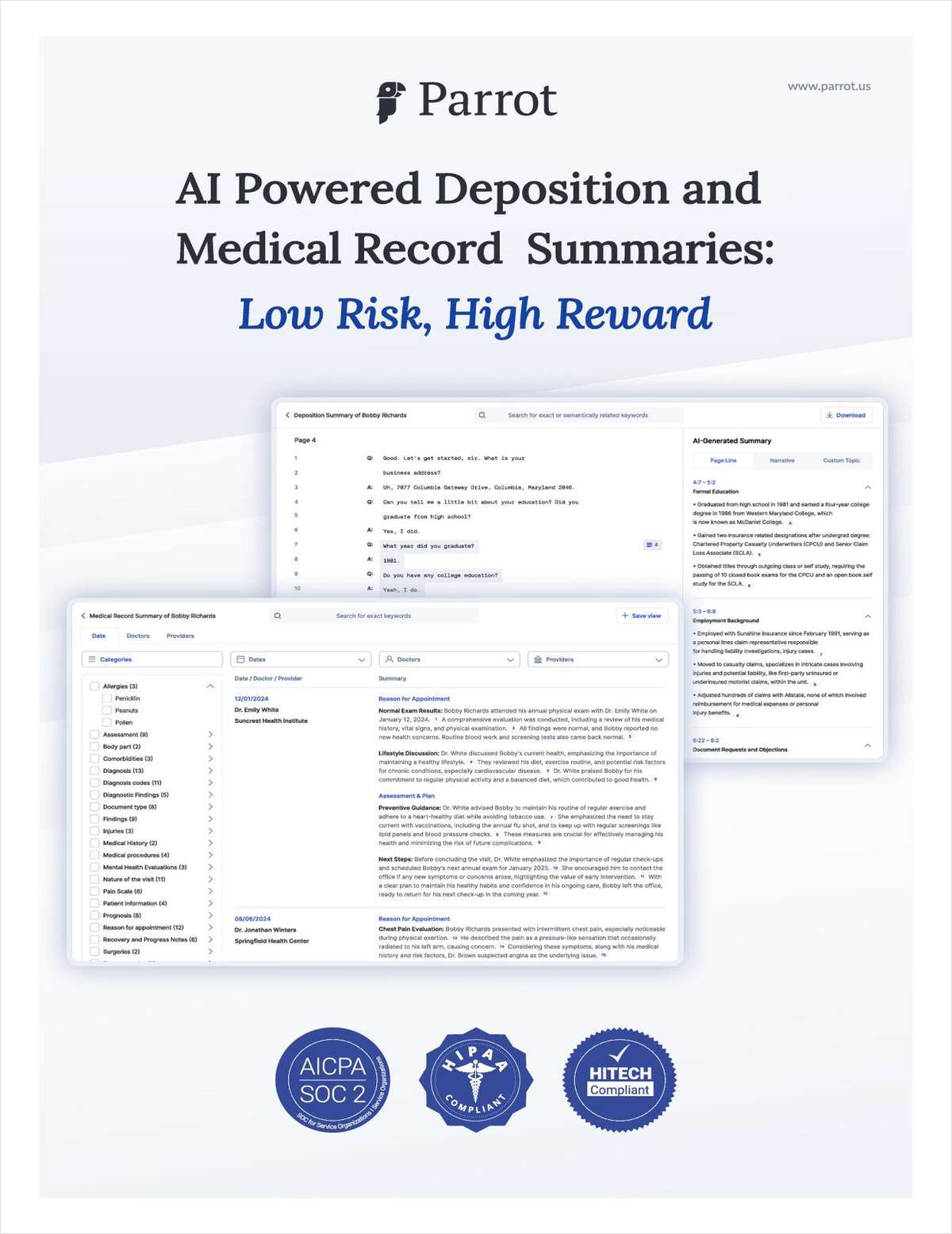 As we look back at the pandemic in the rear-view mirror (for the most part), a lot has changed in both our personal and professional lives. The legal profession is no exception.
As we look back at the pandemic in the rear-view mirror (for the most part), a lot has changed in both our personal and professional lives. The legal profession is no exception.
The pandemic had a major impact on the entire legal universe, as courts attempted to pivot to virtual proceedings. Case backlogs grew and cases were further delayed. This resulted in greater interest in the alternative dispute resolution (ADR) process.
ADR providers were able to adapt quickly to the changing landscape, adding virtual dispute resolution to their offerings. Today, the industry has adopted robust solutions that are meeting the needs of parties. These solutions have been evolving as marketplace preferences have changed over time.
The Growing Popularity of Hybrid ADR
The shift to virtual ADR during the pandemic was logical, as it afforded all parties to remain physically distanced, thus limiting their exposure to COVID. Over time, virtual ADR has morphed into more of a hybrid scenario, where some parties appear remotely while others meet in person and interact with the remote participants virtually.
"These days, virtual participation in ADR has more to do with saving on travel costs than concerns over health," explained Elizabeth Carter, Esq., senior vice president of the East/Central Region of JAMS. "The virtual model is useful for mitigating geographical challenges, as well as providing more scheduling flexibility to the participants. At the same time, many parties still want to be able to be in the same room as the mediator or arbitrator, which is why the hybrid approach is an attractive option for many. I'm convinced these models are here to stay."
Virtual ADR Expands Choice of Neutrals
In addition to the aforementioned advantages of virtual ADR, when remote mediation or arbitration is chosen, there is the added opportunity to select from a much wider array of skilled neutrals. According to Gina Miller, who as senior vice president of JAMS oversees operations for the Western Region of the U.S., while JAMS has a large number of brick-and-mortar Resolution Centers, there are areas where virtual ADR may be a better option.
"Virtual ADR allows us to provide these invaluable services regardless of where the parties are located, even internationally," stated Miller. "This also allows us to offer a much wider panel of highly experienced neutrals to serve as mediators or arbitrators. Typically, neutrals are chosen because of their skill and practice area knowledge, depending on the nature of the case."
Carter added that contractual considerations sometimes dictate the choice of venue. "Because arbitration is a creature of contract, occasionally the proceedings are bound by geography," she said. "So, physical location can be important, but I concur with Gina that virtual ADR comes with the side benefit that we have been able to expand the panel of available arbitrators for a strike and rank list, which means parties can control costs and still get the top-notch neutral they want."
Panel diversity is another important consideration. As panels have expanded, parties now have far more choices regarding diverse neutrals.
Advanced Technology Is Delivering a Seamless ADR Experience
To ensure a seamlessness and efficient experience for all parties to an in-person, virtual or hybrid ADR hearing, JAMS has made significant investments in advanced technology and support staff, redesigning resolution centers to meet the evolving needs of today's disputes.
"Across our all of our national Resolution Centers, we have installed Zoom rooms with large video monitors on the walls, each equipped with cameras that automatically focus on the person speaking in the room so those who are joining virtually are able to really see the person speaking at any given time," explained Carter. "We're always updating our technology to ensure we are at the leading edge of what's available."
"We also have portable equipment that we can roll into any of our caucus rooms, allowing it to become a hybrid environment," added Miller. "We have highly trained virtual moderators who operate the technology to ensure there are no hiccups during hearings and can resolve issues quickly. On top of that, our neutrals are trained in how to conduct virtual hearings, so they are comfortable using the technology effectively. We've done a lot of work around providing a premium service to our clients when it comes to virtual and hybrid hearings."
Miller was quick to point out that in client follow-up surveys, JAMS receives high marks for its in person and virtual levels of support on a consistent basis.
Expanding ADR Services to Meet Growing Need
As the post-pandemic surge in ADR continues, JAMS is meeting the growing demand through expansion of its services and identifying new, growing markets. Even in areas where there are no formal Resolution Centers, JAMS is actively recruiting neutrals. JAMS is expanding its market presence in places like Austin, Nashville, the Carolinas, Central Florida, Ohio, Oregon and Arizona.
As the ADR industry evolves to meet the needs of the legal community and its clients, virtual and hybrid models promise to be primary tools for the successful settlement of disputes for the foreseeable future.
Liz Carter, Esq. is the Senior Vice President of the East/ Central Region of JAMS. Carter oversees regional operations for Resolution Centers located in 11 states, as well as JAMS Canada in Toronto. Carter works to identify and create new business opportunities and is actively involved in marketing and practice development initiatives for her region. She works closely with JAMS Global to implement international business development initiatives in her North American markets.
Gina Miller is the Senior Vice President of the West Region of JAMS. Miller has become an expert in mediation and arbitration practices since joining JAMS in 1989. Miller oversees operations for JAMS Resolution Centers in California, Washington, and Nevada, and is responsible for creating new business opportunities and overseeing the implementation of regional and national marketing initiatives. She is the chair of the regional advisory committee, which works to enhance panel recruitment and overall panel relations.










